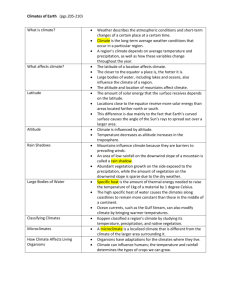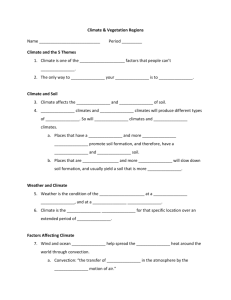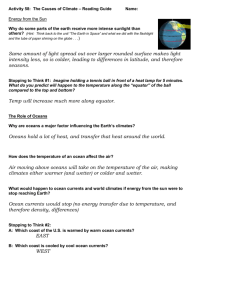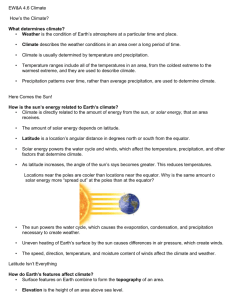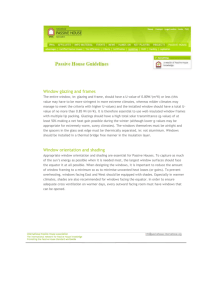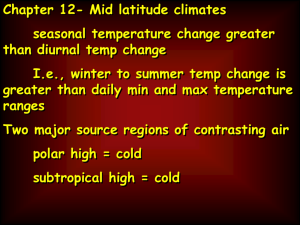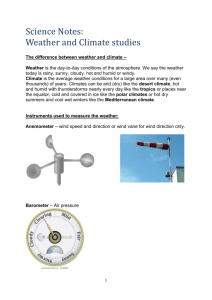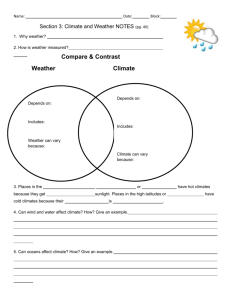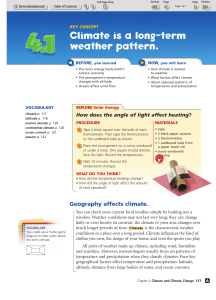Earth Science
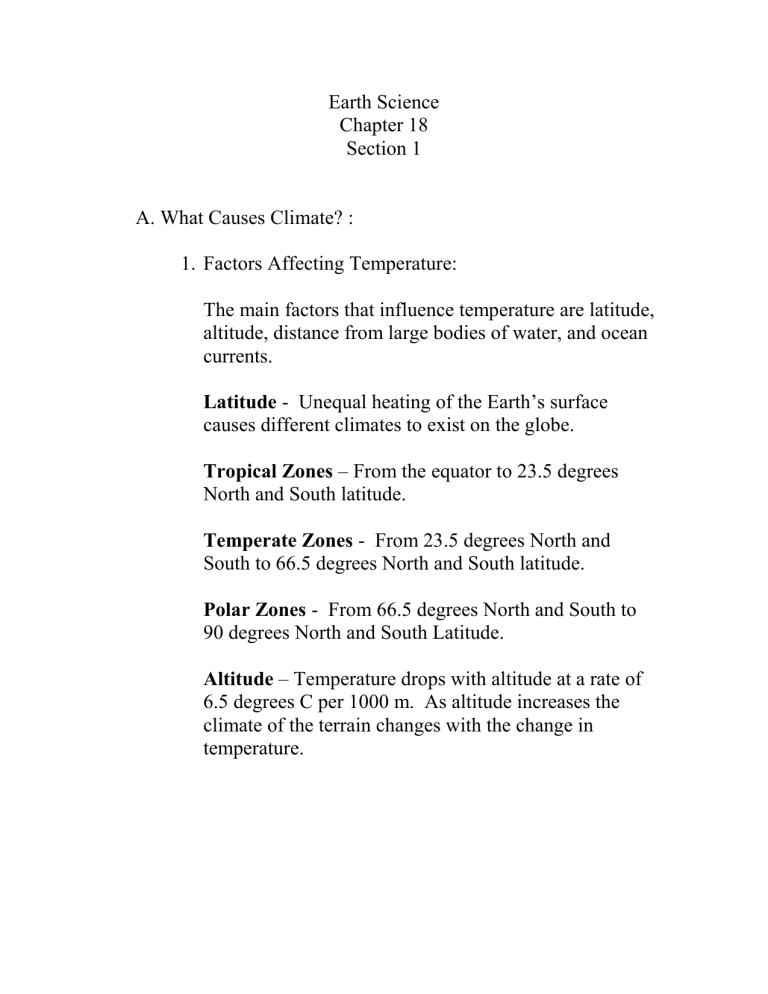
Earth Science
Chapter 18
Section 1
A.
What Causes Climate? :
1.
Factors Affecting Temperature:
The main factors that influence temperature are latitude, altitude, distance from large bodies of water, and ocean currents.
Latitude - Unequal heating of the Earth’s surface causes different climates to exist on the globe.
Tropical Zones – From the equator to 23.5 degrees
North and South latitude.
Temperate Zones - From 23.5 degrees North and
South to 66.5 degrees North and South latitude.
Polar Zones - From 66.5 degrees North and South to
90 degrees North and South Latitude.
Altitude
– Temperature drops with altitude at a rate of
6.5 degrees C per 1000 m. As altitude increases the climate of the terrain changes with the change in temperature.
Distance From large Bodies of Water – Oceans greatly moderate, or make less extreme, the temperature of nearby land.
Coastal areas like the west coasts of North and South
America and Europe have mild marine climates , relatively warm winters and cool summers.
The centers of North America and Asia are too far inland to be warmed or cooled by the oceans. Theses areas have continental climates .
Continental climates have more extreme temperatures than marine climates. Winters are clod, while summers are warm or hot.
Ocean Climates – Marine climates are influenced by ocean currents.
Ocean Currents - Cold currents bring cold water from the poles to the equator having a cooling effect and warm water from the equator to the poles having a warming effect on coastal areas.
Ocean Climates – Marine climates are influenced by ocean currents.
B.
Factors Affecting Precipitation:
The main factors that affect precipitation are prevailing winds and the presence of mountains.
Prevailing Winds - Winds from the oceans have a higher moisture content and contain the moisture for precipitation.
Mountain Ranges - Wet windward side and a dry leeward side.
C. Microclimate:
A small area with a specific climate condition.
Ex. A grove of trees, a parking lot.
D.
The Seasons:
The seasons are caused by the tilt of earth’s axis and Earth travels around the sun.
During winter the Earth is closer to the sun in it’s orbit and the Northern hemisphere is tilted away the sun.
The suns rays are striking at 23.5 degrees South Latitude, therefore the Northern hemisphere is receiving less direct sunlight and is cooler.
During summer the Earth is farther away from the sun in its orbit and the Northern hemisphere is tilted toward the sun.
The suns rays are striking a 23.5 degrees North Latitude, therefore the Northern hemisphere is receiving more direct sunlight and is warmer.
